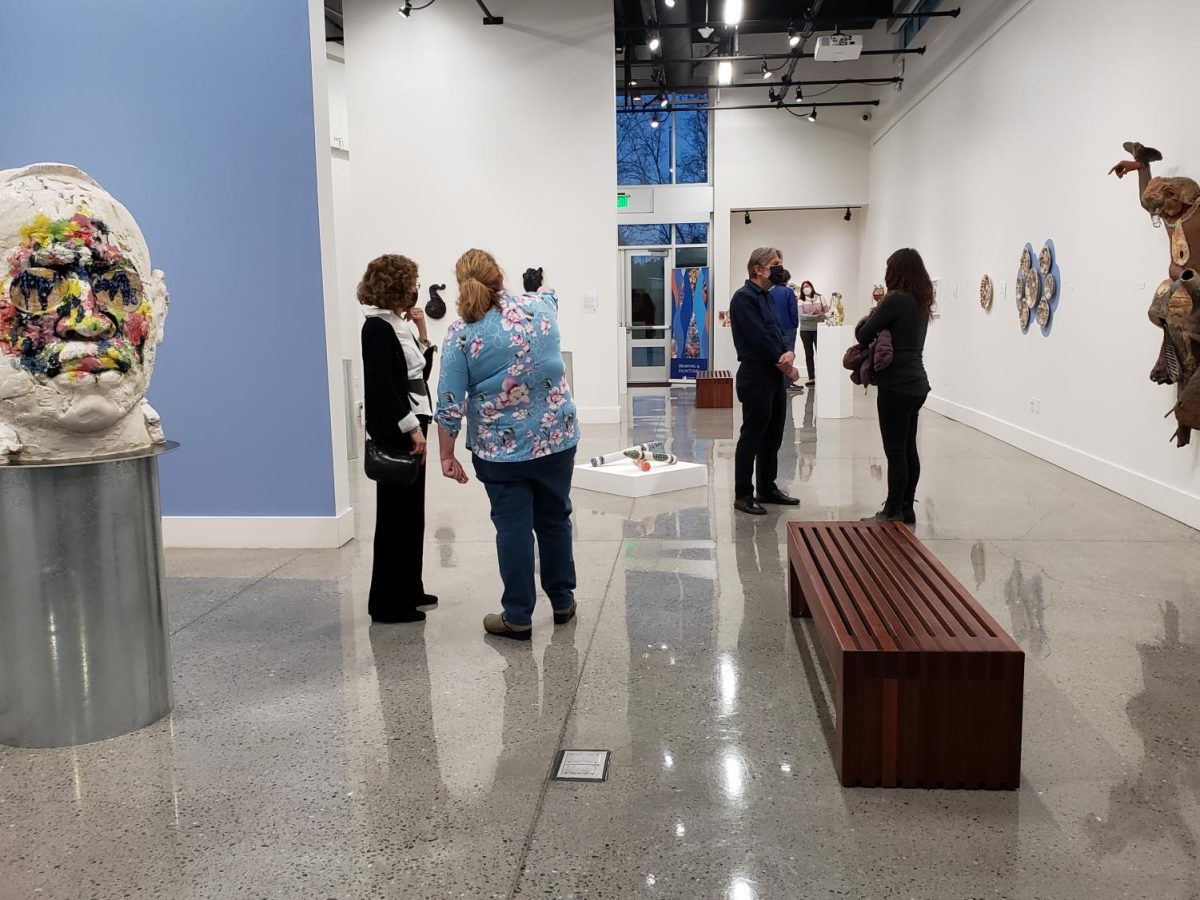Art gallery exhibit explores identity through ceramics
The CRC Art Gallery opened the “Real ID” exhibit on Friday. The exhibit features ceramic pieces all themed around identity.
Photographs by Rianne Herrera
In its first art exhibit since the 2020 campus closure, the Cosumnes River College Art Gallery opened the “Real ID” exhibit on Friday.
The exhibit features 30 works by eight ceramic artists curated by Art Professor Linda Fitz Gibbon. Each piece explores identity and its complexities primarily through an abstract lens.
Fitz Gibbon’s inspiration for the curation of these pieces and for the title of the exhibit itself can be linked to the Real ID cards which were recently implemented in California.
“When the government came out with this idea of creating a card that is ‘real,’ it just made me think about ‘what does identity mean?’ It means something different to everybody. And it could be something that changes over time,” Fitz Gibbon said. “It can’t be just simply put on a card, your identity. It’s not just your name and where you live, right?”
While each piece at the exhibit pertains to identity, each artist expressed a unique aspect of their own identities, whether it was race, gender or sexuality. Even health was considered a facet of identity, as the artist Shenny Cruces presented in her piece “Breastplates,” which was composed of ceramic plates and related to her identity as a breast cancer survivor.
In her artist statement, Cruces explained how the plates themselves were gifted to her by a fellow survivor in a breast cancer support group. Two plates in the piece feature decals of Cruces’ own mammograms, along with other plates featuring the chemical make-up and botanical origin of the breast cancer drug Taxol.
Cruces said one of the most fascinating parts of clay was “the memory in it.”
“I think that the beauty of clay is that it is so responsive to us, to our body,” Cruces said. “When we’re sculpting and making things out of clay, it is responding to us in a physical way, so I think that maybe that’s where I see identity being intrinsically tied to ceramics.”
“Black” was another series of works on display by the artist Maya Vivas that explored the artist’s identity as a black person. In her artist statement, Vivas explained that the sculpted black organs “make a direct connection to the slave auction, implicating the viewer as a participant in the capitalistic game of purchasing black goods” and are on display for the viewer to “judge, revere, gawk, ponder and covet” in the same way black bodies often are.
Photography Professor Patty Felkner explained how she had originally interpreted “Black,” as well as her amazement with the piece after reading the artist’s statement.
“When I first saw this one, it really reminds me of a wave or hair, and then when I was just reading the statement, you know, what the artist puts into work and what the viewer takes away is so different sometimes,” Felkner said. “I really didn’t see this as colonization or anything that had to do with commoditization of the black body or anything, but now looking at it, I kind of see that.”
Fitz Gibbon said the exhibit took more than a year to curate, and noted that the exhibit was only a part of a larger project by the National Council on Education for the Ceramic Arts titled “Fertile Ground.”
“And you know, you can only cherry pick. I mean, I’m sure there could have been other choices as well,” Fitz Gibbon said. “That’s the thing that’s so humbling. Look at this is all made out of clay, and yet every single artist is coming at it from a different point of view.”
The “Real ID” exhibit will be on display at the art gallery until March 29, and will feature an NCECA reception on March 17. More details on the exhibit are available here.

